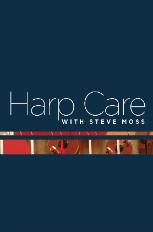 Any harp that’s in regular use – especially one that gets moved a lot – is going to collect its share of scratches, dents, and dings. Some harpists accept these as a fact of life and overlook them. Others tear their hair out at the slightest mark. Most likely you fall somewhere in between. You hate that that music stand fell on your soundboard, but you can’t change the past, right?
Any harp that’s in regular use – especially one that gets moved a lot – is going to collect its share of scratches, dents, and dings. Some harpists accept these as a fact of life and overlook them. Others tear their hair out at the slightest mark. Most likely you fall somewhere in between. You hate that that music stand fell on your soundboard, but you can’t change the past, right?
Well, in some cases, you can. There are experts in finish touch-ups who can make these blemishes on your harp’s finish invisible – or nearly so. Just how invisible can depend on the nature and the location of the blemish (and the skill of the touch-up person). But there is nearly always something that can be done to improve the look of a harp that’s been around the block a few times.
If you live near a harp dealer or harp builder, you may have access to someone with harp touch-up experience. But what if you don’t? If the harp resources in your area are slim, I recommend checking with area piano technicians to see who they refer for touch-up work. Any touch-up artist who gets referrals from piano technicians will be used to working with musical instruments. Some touch-up techniques involve spraying a finish coat or two of lacquer over the repair, and you’ll want to avoid getting lacquer sprayed on your strings or your harp’s action or levers. For this reason, you’re best off working with someone who has experience with musical instruments. The local guitar repair shop may also have an experienced touch-up artist on staff or someone they can refer.
If you can’t find someone through these channels, furniture dealers can usually recommend a touch-up artist. The common harp finishes, nitrocellulose lacquer, polyurethane, and shellac (on older harps), are the same finishes used on a lot of commercial furniture. If you work with someone who is more used to furniture than instruments, talk to them about the importance of keeping overspray off your strings. Offer to mask parts of your harp off ahead of time if they are not willing to.
The bottom line for finding good touch up artists is: ask around. Get referrals. The finishing trade is an unregulated profession, and anyone can say they know what they’re doing. It’s really easy for someone who is untrained or inexperienced to make your harp look worse than it did before. Take the time to find out who is the best professional in your area. You’ll be glad you did.


0 Comments